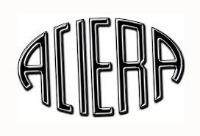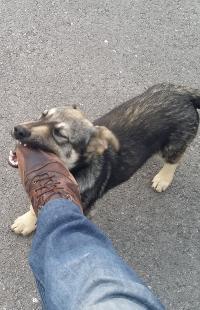I followed this guide for discovery option.
forum.linuxcnc.org/39-pncconf/52554-disc...n-unlisted-mesa-fpga
on readhmid I have:
Configuration Name: HOSTMOT2
General configuration information:
BoardName : MESA7I96
FPGA Size: 20 KGates
FPGA Pins: 256
Number of IO Ports: 3
Width of one I/O port: 17
Clock Low frequency: 100.0000 MHz
Clock High frequency: 200.0000 MHz
IDROM Type: 3
Instance Stride 0: 4
Instance Stride 1: 64
Register Stride 0: 256
Register Stride 1: 256
Modules in configuration:
Module: DPLL
There are 1 of DPLL in configuration
Version: 0
Registers: 7
BaseAddress: 7000
ClockFrequency: 100.000 MHz
Register Stride: 256 bytes
Instance Stride: 4 bytes
Module: WatchDog
There are 1 of WatchDog in configuration
Version: 0
Registers: 3
BaseAddress: 0C00
ClockFrequency: 100.000 MHz
Register Stride: 256 bytes
Instance Stride: 4 bytes
Module: IOPort
There are 3 of IOPort in configuration
Version: 0
Registers: 5
BaseAddress: 1000
ClockFrequency: 100.000 MHz
Register Stride: 256 bytes
Instance Stride: 4 bytes
Module: StepGen
There are 5 of StepGen in configuration
Version: 2
Registers: 10
BaseAddress: 2000
ClockFrequency: 100.000 MHz
Register Stride: 256 bytes
Instance Stride: 4 bytes
Module: MuxedQCount
There are 10 of MuxedQCount in configuration
Version: 4
Registers: 5
BaseAddress: 3600
ClockFrequency: 100.000 MHz
Register Stride: 256 bytes
Instance Stride: 4 bytes
Module: MuxedQCountSel
There are 1 of MuxedQCountSel in configuration
Version: 0
Registers: 0
BaseAddress: 0000
ClockFrequency: 100.000 MHz
Register Stride: 256 bytes
Instance Stride: 4 bytes
Module: OutM
There are 1 of OutM in configuration
Version: 0
Registers: 1
BaseAddress: B000
ClockFrequency: 100.000 MHz
Register Stride: 256 bytes
Instance Stride: 4 bytes
Module: PWM
There are 1 of PWM in configuration
Version: 0
Registers: 5
BaseAddress: 4100
ClockFrequency: 200.000 MHz
Register Stride: 256 bytes
Instance Stride: 4 bytes
Module: SSerial
There are 1 of SSerial in configuration
Version: 0
Registers: 6
BaseAddress: 5B00
ClockFrequency: 100.000 MHz
Register Stride: 256 bytes
Instance Stride: 64 bytes
Module: SSR
There are 1 of SSR in configuration
Version: 0
Registers: 2
BaseAddress: 7D00
ClockFrequency: 100.000 MHz
Register Stride: 256 bytes
Instance Stride: 4 bytes
Module: InM
There are 1 of InM in configuration
Version: 0
Registers: 5
BaseAddress: 8500
ClockFrequency: 100.000 MHz
Register Stride: 256 bytes
Instance Stride: 4 bytes
Module: LED
There are 1 of LED in configuration
Version: 0
Registers: 1
BaseAddress: 0200
ClockFrequency: 100.000 MHz
Register Stride: 256 bytes
Instance Stride: 4 bytes
Configuration pin-out:
IO Connections for TB3 -> 7I89
Pin# I/O Pri. func Sec. func Chan Sec. Pin func Sec. Pin Dir
TB3-1,2,9,10 0 IOPort InM 0 Input0 (In)
TB3-4,5,12,13 1 IOPort InM 0 Input1 (In)
TB2-7,8,15,16 2 IOPort InM 0 Input2 (In)
TB3-17,18,TB2-1,2 3 IOPort InM 0 Input3 (In)
TB3-20,21,TB2-4,5 4 IOPort InM 0 Input4 (In)
TB3-23,24,TB2-7,8 5 IOPort InM 0 Input5 (In)
TB2-9,10,17,18 6 IOPort InM 0 Input6 (In)
TB2-12,13,20,21 7 IOPort InM 0 Input7 (In)
TB2-15,16,23,24 8 IOPort InM 0 Input8 (In)
TB1-1,2,9,10 9 IOPort InM 0 Input9 (In)
TB1-4,5,12,13 10 IOPort InM 0 Input10 (In)
TB1-7,8,15,16 11 IOPort SSR 0 Out-00 (Out)
Internal-EncMux 12 IOPort SSR 0 Out-01 (Out)
Internal-EncPower 13 IOPort SSR 0 Out-02 (Out)
TB1-19,20 14 IOPort SSR 0 Out-03 (Out)
TB1-21,22 15 IOPort OutM 0 Output4 (Out)
Internal-TXEn 16 IOPort OutM 0 Output5 (Out)
IO Connections for TB1/TB2 -> 7I96_1
Pin# I/O Pri. func Sec. func Chan Sec. Pin func Sec. Pin Dir
TB1-2,3 17 IOPort StepGen 0 Step/Table1 (Out)
TB1-4,5 18 IOPort StepGen 0 Dir/Table2 (Out)
TB1-8,9 19 IOPort StepGen 1 Step/Table1 (Out)
TB1-10,11 20 IOPort StepGen 1 Dir/Table2 (Out)
TB1-14,15 21 IOPort StepGen 2 Step/Table1 (Out)
TB1-16,17 22 IOPort StepGen 2 Dir/Table2 (Out)
TB1-20,21 23 IOPort StepGen 3 Step/Table1 (Out)
TB1-22,23 24 IOPort StepGen 3 Dir/Table2 (Out)
TB2-2,3 25 IOPort StepGen 4 Step/Table1 (Out)
TB2-4,5 26 IOPort StepGen 4 Dir/Table2 (Out)
TB2-7,8 27 IOPort MuxedQCount 4 MuxQ-A (In)
TB2-10,11 28 IOPort MuxedQCount 4 MuxQ-B (In)
TB2-13,14 29 IOPort MuxedQCount 4 MuxQ-IDX (In)
TB2-16,17 30 IOPort SSerial 0 RXData0 (In)
TB2-18,19 31 IOPort SSerial 0 TXData0 (Out)
Internal-TXEn 32 IOPort SSerial 0 TXEn0 (Out)
Internal 33 IOPort SSR 0 AC Ref (Out)
IO Connections for P1 -> 7I96_2
Pin# I/O Pri. func Sec. func Chan Sec. Pin func Sec. Pin Dir
P1-01/DB25-01 34 IOPort MuxedQCount 0 MuxQ-A (In)
P1-02/DB25-14 35 IOPort MuxedQCount 0 MuxQ-B (In)
P1-03/DB25-02 36 IOPort MuxedQCount 0 MuxQ-IDX (In)
P1-04/DB25-15 37 IOPort MuxedQCount 1 MuxQ-A (In)
P1-05/DB25-03 38 IOPort MuxedQCount 1 MuxQ-B (In)
P1-06/DB25-16 39 IOPort MuxedQCount 1 MuxQ-IDX (In)
P1-07/DB25-04 40 IOPort MuxedQCount 2 MuxQ-A (In)
P1-08/DB25-17 41 IOPort MuxedQCount 2 MuxQ-B (In)
P1-09/DB25-05 42 IOPort MuxedQCount 2 MuxQ-IDX (In)
P1-11/DB25-06 43 IOPort MuxedQCount 3 MuxQ-A (In)
P1-13/DB25-07 44 IOPort MuxedQCount 3 MuxQ-B (In)
P1-15/DB25-08 45 IOPort MuxedQCount 3 MuxQ-IDX (In)
P1-17/DB25-09 46 IOPort MuxedQCountSel 0 MuxSel0 (Out)
P1-19/DB25-10 47 IOPort None
P1-21/DB25-11 48 IOPort SSerial 0 RXData1 (In)
P1-23/DB25-12 49 IOPort SSerial 0 TXData1 (Out)
P1-25/DB25-13 50 IOPort SSerial 0 TXEn1 (Out)
is this normal :
IO Connections for TB3 -> 7I89
IO Connections for TB1/TB2 -> 7I96_1
IO Connections for P1 -> 7I96_2
that should be 7i89 on p1 I think. The discovery option worked and, in pncconf, 7i89 inputs is at P1. I just had some pain to found the input tab of the Help window to paste the 7i96s_7i89d.pin file content. And the channel numbers are a little bit messed up inside each tab. Is there a chance of damaging a pin if there is a mistake in the file made with pncconf ? I will check in the hal file








